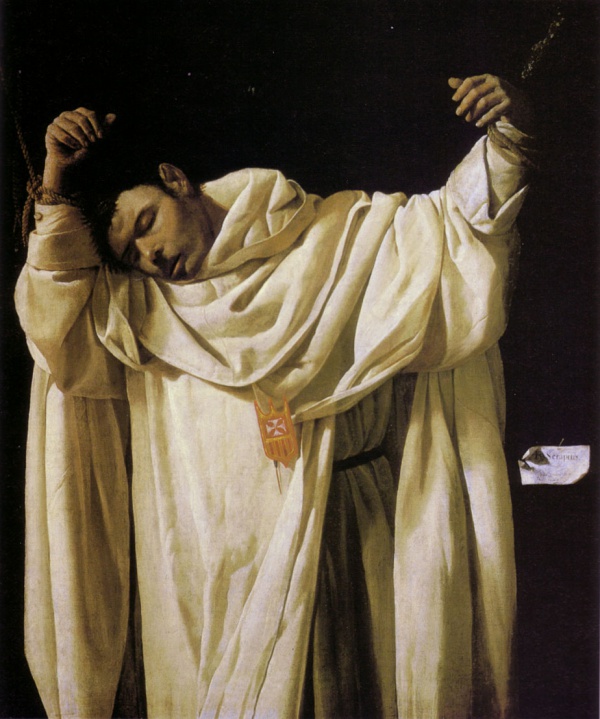Facts About Saint Serapion (Zurbarán)
"Saint Serapion" also known as "The Martyrdom of Saint Serapion" is a compelling oil painting created in 1628 by Spanish artist Francisco Zurbarán. This masterpiece, commissioned by the Mercedarian Order for their monastery in Seville, depicts the martyrdom of Saint Serapion of Algiers.
Zurbarán, renowned for his ability to evoke the suffering and repentance of his subjects, presents Saint Serapion in a pose reminiscent of crucifixion, with his hands bound above his head. The artist skillfully employs chiaroscuro—a technique that contrasts light and dark—in the Spanish Tenebrist style to emphasize the serene white cloth against the dramatic, dark folds surrounding it. This approach generates a powerful visual tension.
Critic Tom Lubbock highlighted the painting's calm portrayal of Saint Serapion's death, contrasting it with the violent martyrdom of Saint Edmund Campion. The artwork has been praised for its simplicity and for elevating humble fabric to a divine status.
The painting has also resonated within American culture. Poet Frank O'Hara referenced Zurbarán's depiction of Saint Serapion in his poem "Meditations in an Emergency."

 Canada
Canada